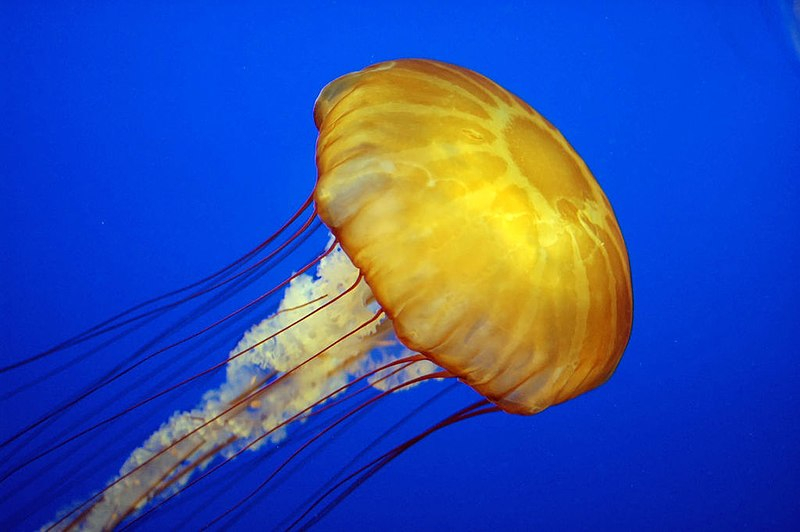Jellyfish
The jellyfish, a fascinating and ancient marine creature, is a prominent representative among animals that start with the letter "J." These gelatinous beings belong to the phylum Cnidaria and are found in oceans worldwide, exhibiting a wide range of shapes, sizes, and colors.
One of the distinctive features of jellyfish is their umbrella-shaped bell, which comprises a soft, transparent body. Hanging from the center of the bell are long, trailing tentacles equipped with specialized cells called cnidocytes. These cells contain nematocysts, tiny harpoon-like structures that inject venom into prey or potential threats.
Jellyfish are remarkably diverse, with thousands of species identified to date. Some species are small and nearly invisible, while others, such as the lion's mane jellyfish, boast tentacles that can extend over 120 feet (36 meters). Their varied appearances and adaptations contribute to their success in different oceanic environments.
Despite their name, jellyfish are not true fish; they lack a backbone and belong to a different branch of the animal kingdom. Their movements are orchestrated by a simple nervous system that allows them to pulse and drift through the water. While jellyfish can propel themselves, they are largely at the mercy of ocean currents.
Jellyfish play crucial roles in marine ecosystems, serving as both predators and prey. They feed on small fish, plankton, and even other jellyfish, while providing sustenance for larger marine creatures, such as sea turtles and certain species of fish. The balance of jellyfish populations is essential for maintaining the health of ocean ecosystems.
The lifecycle of a jellyfish involves fascinating transformations. Starting as a tiny larva, the jellyfish develops into a polyp, a stationary phase resembling a small tube attached to a substrate. Eventually, the polyp transforms into a free-swimming medusa, the familiar bell-shaped stage, capable of producing more jellyfish through asexual reproduction.
















